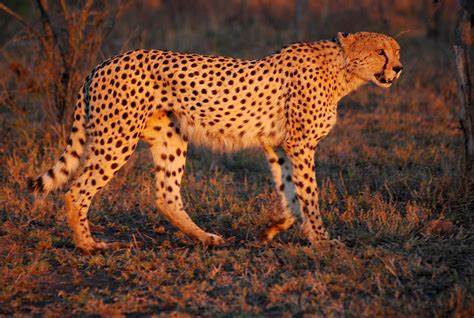Cheetah reintroduction program
2021 JUN 7
Preliminary >
Environment and Ecology > Species extinction & protection > Species in news

Why in news?
- Cheetah, the world's fastest land animal which was declared extinct in India in 1952, is expected to be reintroduced into the country in November this year at the Kuno National Park in Madhya Pradesh.
About the reintroduction program:
- Until the early 20th century, Asiatic cheetahs were in abundance in the region, but later they population declined due to widespread trapping and taming.
- Furthermore, during British rule in India, cheetahs were classified as vermin and rewards were offered for the culling of the animal and in 1952, Cheetahs were declared extinct in India.
- The plans for the reintroduction of cheetahs in India was solicited back in 1955. But the movement gained real momentum in 1970 when Iran -- the only country in support of the endangered Asiatic species -- was approached by the Indian government to supply the animals.
- This was followed by decades of negotiations. Finally, in 2010 the plan to bring in Asiatic cheetahs from Iran was relinquished.
- After this, a feasible option for India was sourcing African cheetahs from countries like Kenya, Namibia and South Africa.
- However legal opposition from conservationists, primarily due to concerns over the genetic differences between the two species and also the guidelines issued for the relocation of alien wildlife, delayed the process for more than eight years.
- The Indian government has allocated a sum of Rs 2 crores 65 lakh for the relocation project.
- In January 2020, the Supreme Court gave the green signal to reintroduction of Southern African cheetahs.
Kuno wildlife sanctuary
- In 2021, the results of an in-depth viability assessment, which analysed the suitability of six parks and sanctuaries, was published by the Wildlife Institute of India (WII).
- Ultimately, Kuno National Park in Madhya Pradesh, was chosen as the favourable site for cheetah reintroduction by the MoEF, NTCA, and WII.
- Kuno National Park, occupies an area of 748 sq km. In the semi-arid park, wild cattle and chital, also known as spotted deer, are found in abundance.
- Moreover, the presence of wild boar will make good prey for the arriving cheetahs.
- Also, minimal improvements were required to make the area suitable for the translocated cheetahs.
Regarding African Cheetah
- The Southeast African cheetah is the nominate cheetah subspecies native to East and Southern Africa.
- The Southern African cheetah lives mainly in the lowland areas and deserts of the Kalahari, the savannahs of Okavango Delta, and the grasslands of the Transvaal region in South Africa.
- Southern cheetah found in in Southern and East African countries including Namibia, Botswana, and South Africa. IUCN status: Vulnerable.
- Northwest African cheetah found in Algeria, Benin, Burkina Faso and Niger. IUCN status: Critically Endangered
Asiatic Cheetah
- The Asiatic cheetah also known as Iranian or Persian cheetah, is a Critically Endangered cheetah subspecies surviving today only in Iran.
- It once occurred from the Arabian Peninsula and Caspian region, Pakistan and India.
- Cheetahs went extinct from India in the 20th century.
- The cheetah thrives in open lands, small plains, semi-desert areas, and other open habitats where prey is available.
Prelims question
Consider the following statements regarding “African and Asian Cheetah”:
1.African Cheetahs are endemic to Namibia and South Africa.
2.Asiatic Cheetahs are critically endangered.
Which of the statements given above is/are correct?
(a)1 only
(b)2 only
(c)Both 1 and 2
(d)Neither 1 nor 2
Answer to prelims question
